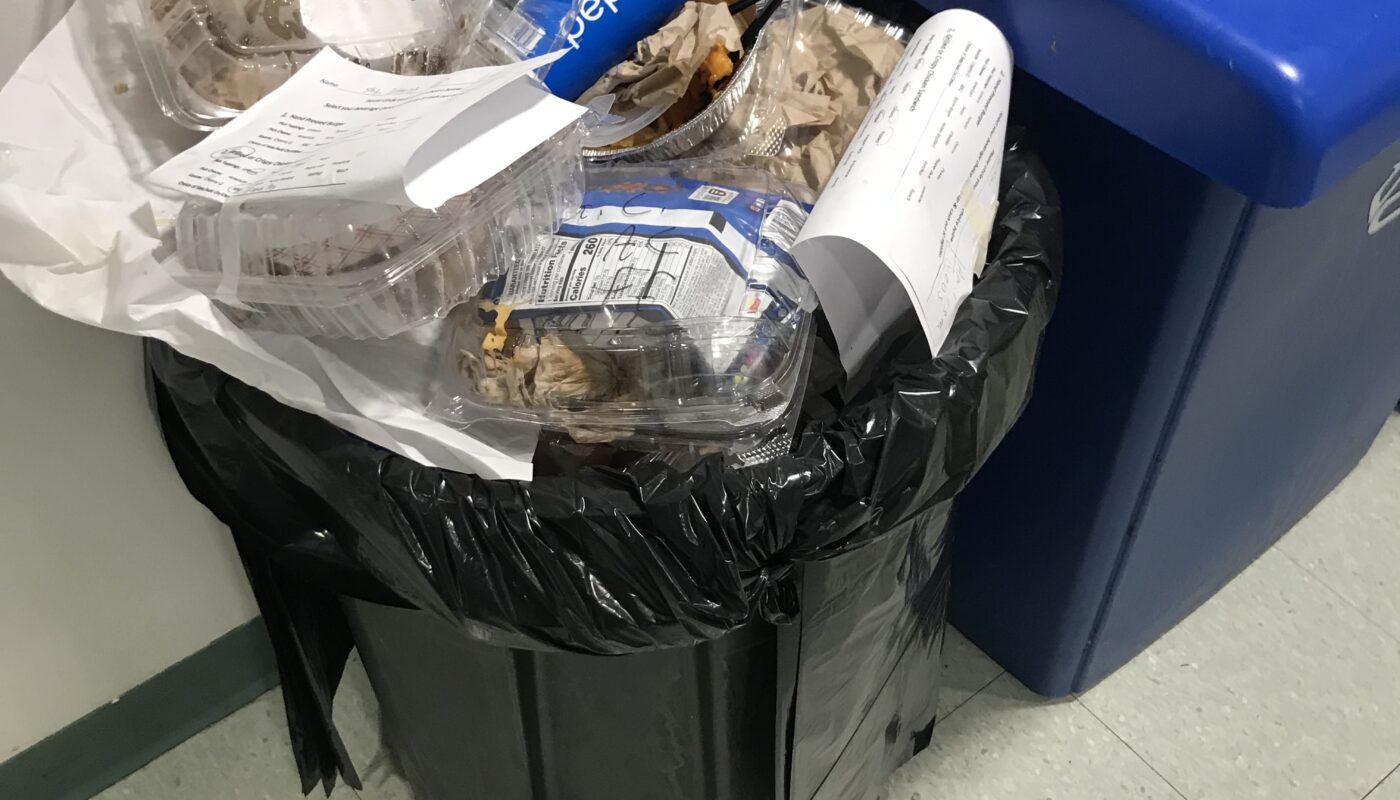Honors Project Op-Ed
By Carl Kieri
Single-use plastic have a negative impact on the environment and our health. Production of plastic emits absurd amounts of greenhouse gases; one ton plastic emits five tons carbon dioxide. (Carbon Tracker, 2020). Plastic also contains substances that can be bad for us to ingest, posing a problem to our health. At Herkimer College, I believe we should do our part to cut back on plastic, both for the sake of the environment, and for our own health. To do this, it is up to everyone together to be responsible and take action.
The world is faced with a great problem in the form of the climate crisis. The emission of greenhouse gas, such as carbon dioxide and methane, will increase the temperature on the planet which leads to devastating consequences such as natural disasters, problems with food and water, degradation of the environment, and possibly social issues such as economic disruption and conflicts. (United Nations, 2022). Plastic articles are created by using oil and gas, both of which are non-renewable resources, and extracting these pollutes the environment further. (Vanaerschot & Plaisier, 2021).
Nearly all plastic contains chemicals that can harm us. When plastic is thrown away, it gets broken down into tiny pieces called microplastics. These pieces can end up in our food, in our water, and even in our air. On average, we consume 5 grams of plastic every week, the same amount that can be found in a credit card, which is not optimal. (De Wit & Bigaud, 2019).
The environmental factor causing the most disease around the globe today is pollution. “It is responsible for an estimated nine million premature deaths per year, enormous economic losses, erosion of human capital, and degradation of ecosystems.” (Landrigan, 2020). Pollution is waste created by humans that are released into the air, land, or water. Lots of this pollution is related to plastic, either by obtaining resources to create plastic, the production of plastic, or how we take care of it. These numbers shows how serious pollution is, and we need to make sure we do something about it.
Since most of the single-use plastic comes from the food industry, I believe the best thing we can do is to focus on the cafeteria and dining center. We need to think about our decisions and the impact they will have. There are plenty of single-use plastic in the cafeteria in the forms of bags, food containers, cups, lids, and more. We should aim to reduce the amount of single-use plastic used in the cafeteria, by removing some single use articles or moving to more environmentally friendly material.
Other schools in the SUNY system have been successful in their work towards a more sustainable environment as they have cut back on plastic. Both SUNY Oswego and Stony Brook University have launched initiatives to reduce their usage of plastic in their dining halls. (SUNY Oswego, 2018), (Stony Brook University, 2019). Stony Brook have worked with compostable food containers, and this semester have tried out a program with reusable containers. Even though I cannot find any official data on this, I am sure they save in lots of money while making a better choice for the environment. Seeing other schools in the same system being successful with this is an indicator that we should be able to make a similar switch here at Herkimer and take our part in helping the environment.
As students, our decisions also play a big part in this. We need to consider if we really need a bag, sauce cups, lids, and straws every time or if we can avoid using some single-use plastic that we only will end up throwing away as soon as we are done eating. Maybe we can carry our food to the table without bags, put sauce in the food container instead of in a cup, and take our drink without a plastic lid.
If we are successful in our attempts to cut back on the plastic and the single-use articles, it will mean we do more on our part to help our health and the environment. While it may not feel like much, it is certainly better than doing nothing, and hopefully it is a first of many steps in the right direction.
Resources
Carbon Tracker. (2020, September 4). The Future’s Not in Plastics: Why plastics demand won’t rescue the oil sector. Retrieved from Carbon Tracker: https://carbontracker.org/reports/the-futures-not-in-plastics/
De Wit, W., & Bigaud, N. (2019). No Plastic in Nature: Assessing Plastic Ingestion from Nature to People. Gland, Switzerland: WWF, Dalberg.
Landrigan, P. J.-D. (2020, December 3). Human Health and Ocean Pollution. Annals of global health.
Stony Brook University. (2019, September 25). Campus Launches Major Plastic Waste Reduction in Dining Services . Retrieved from Stony Brook University News: https://news.stonybrook.edu/oncampus/campus-launches-major-plastic-waste-reduction-in-dining-services/
SUNY Oswego. (2018, November 13). Teamwork leads to reduced plastic use on campus . Retrieved from SUNY Oswego News + Events: https://www.oswego.edu/news/story/teamwork-leads-reduced-plastic-use-campus
United Nations. (2022, May 3). The Climate Crisis – A Race We Can Win . Retrieved from United Nations: https://www.un.org/en/un75/climate-crisis-race-we-can-win
Vanaerschot, F., & Plaisier, M. (2021, October). The unbearable cost of single-use plastics. Brussels: FairFin.




